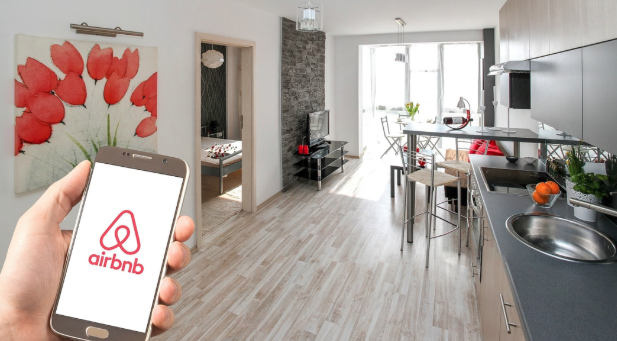Creating a robust financial model for commercial real estate (CRE) is a critical skill for investors, developers, and property managers seeking to optimize their investment strategies. A well-structured financial model not only assesses the financial viability of real estate investments but also forecasts future cash flows and enhances decision-making processes.
In this step-by-step guide, you will learn how to build a comprehensive CRE financial model. We have focused on essential metrics such as Net Operating Income (NOI), Capitalization Rate (Cap Rate), and Debt Service Coverage Ratio (DSCR). Equip yourself with the knowledge and tools to navigate the complexities of the commercial real estate market effectively.
We have also built a Commercial Real Estate Developer Financial Model Template for Property Developers and Entrepreneurs to use. Put your assumptions into our model and it will handle everything for you! You’ll get an Income Statement, Balance Sheet, Cash Flow Statement with 10 years of forecasts, Real Estate specific metrics and ratios, as well as a valuation page.
What is a Commercial Real Estate Financial Model?
A commercial real estate financial model is a structured representation of a property’s financial performance over a specified period, usually five to ten years. This model includes projections for revenue, operating expenses, financing costs, and various performance metrics.
Key Components of a Commercial Real Estate Financial Model
- Revenue Projections: Estimations of rental income and other revenue sources.
- Operating Expenses: Direct and indirect costs associated with property management.
- Financing Costs: Costs related to loans and debt servicing.
- Key Performance Indicators (KPIs): Metrics that assess the investment’s performance.
- Cash Flow Analysis: Assessment of cash inflows and outflows over time.
Important Metrics to Include
- Net Operating Income (NOI): Total revenue minus operating expenses, representing the income generated by the property.
- Capitalization Rate (Cap Rate): A measure of the expected return on an investment property, calculated by dividing NOI by the property’s value.
- Gross Rent Multiplier (GRM): A valuation metric calculated by dividing the property price by the gross rental income.
- Loan-To-Value Ratio (LTVR): The ratio of the loan amount to the property value, indicating financial leverage.
- Debt Service Coverage Ratio (DSCR): A measure of cash flow available to pay current debt obligations, calculated as NOI divided by total debt service.
- Operating Expense Ratio (OER): A ratio of operating expenses to effective gross income, indicating the efficiency of property management.
- Occupancy Rate: The percentage of leased space compared to total available space, reflecting demand and profitability.
How to Build a Commercial Real Estate Financial Model: Step-by-Step for Beginners
Step 1: Define Your Assumptions
Start by outlining the key assumptions that will drive your financial model. These should include:
- Property Purchase Price: The total cost to acquire the property.
- Rental Income: Monthly and annual rental income based on leasing agreements.
- Operating Expenses: Estimated costs for property management, maintenance, taxes, insurance, and utilities.
- Financing Terms: Loan amount, interest rate, term, and other relevant financing details.
- Market Metrics: Assumptions for growth rates, occupancy rates, and future expenses.
Example Assumptions
- Property Purchase Price: $1,000,000
- Monthly Rental Income: $10,000
- Operating Expenses: $3,000 per month
- Loan Amount: $750,000
- Interest Rate: 4%
- Loan Term: 20 years
- Occupancy Rate: 90%
Step 2: Organize your model
Organize your financial model in a spreadsheet for clarity and ease of use. Common sections to include are:
- Input Assumptions: A dedicated section for all key metrics.
- Revenue Projections: Detailed forecasts of rental income and other revenue sources.
- Operating Expenses: Breakdown of all operating costs.
- Financing Costs: Calculation of debt service and financing costs.
- Cash Flow Statement: Summary of cash inflows and outflows.
- Key Performance Metrics: Summary of important financial ratios and metrics.
Step 3: Prepare the input assumptions sheet
Set up an input assumptions sheet in your spreadsheet where all key metrics are clearly defined. This sheet will serve as the foundation of your model, making it easy to update and adjust assumptions without affecting the overall structure.
Step 4: Calculate Revenue Projections
To forecast your revenue, start with rental income:
- Annual Rental Income:
Annual Rental Income = Monthly Rental Income ×12
- Effective Gross Income (EGI):
EGI = Annual Rental Income × Occupancy Rate
Example Calculation
- Monthly Rental Income: $10,000
- Annual Rental Income:
10,000 × 12 = $120,000
- Effective Gross Income (EGI) with 90% occupancy:
120,000 × 0.90 = $108,000
Step 5: Calculate Net Operating Income (NOI)
NOI is calculated as follows:
NOI = EGI − Operating Expenses
Example Calculation
Assuming monthly operating expenses of $3,000:
- Annual Operating Expenses:
3,000 × 12 = $36,000
- NOI:
108,000 − 36,000 = $72,000
Step 6: Calculate Capitalization Rate (Cap Rate)
The Cap Rate helps investors evaluate the potential return on an investment. It is calculated by dividing NOI by the property value:
Cap Rate = NOI / Property Value
Example Calculation
Cap Rate = 72,000 / 1,000,000 = 0.072 or 7.2%
Step 7: Calculate Gross Rent Multiplier (GRM)
The GRM provides a quick estimate of a property’s value based on rental income. It is calculated by dividing the property price by gross rental income:
GRM = Property Price / Annual Rental Income
Example Calculation
GRM = 1,000,000 / 120,000 ≈ 8.33
Step 8: Estimate Financing Costs
Calculate your loan payments using the loan amount, interest rate, and loan term.
Step 9: Calculate Debt Service Coverage Ratio (DSCR)
The DSCR indicates the property’s ability to cover its debt obligations. It is calculated as follows:
DSCR = NOI / Total Debt Service
Example Calculation
- Total Annual Debt Service:
4,545.52 × 12 = $54,546.24
- DSCR:
DSCR = 72,000 / 54,546.24 ≈1.32
Step 10: Calculate Loan-To-Value Ratio (LTVR)
LTVR measures the amount of financing compared to the property value, indicating the level of financial risk:
LTVR = Loan Amount / Property Value
Example Calculation
LTVR = 750,000 / 1,000,000 = 0.75 or 75%
Step 11: Calculate Operating Expense Ratio (OER)
OER measures the proportion of operating expenses to effective gross income, reflecting property management efficiency:
OER = Operating Expenses / EGI
Example Calculation
OER = 36,000 / 108,000 ≈ 0.333 or 33.3%
Step 12: Calculate Occupancy Rate
The occupancy rate indicates how much of the available space is currently leased. It is calculated as follows:
Occupancy Rate = Leased Space / Total Space ×100
Example Calculation
Assuming you have a total of 10,000 square feet and 9,000 square feet leased:
Occupancy Rate = 9,000 / 10,000 × 100 =90%
Step 13: Create a Cash Flow Statement
The cash flow statement summarizes all cash inflows and outflows over time. Organize it into sections:
- Cash Inflows: Include total revenue from rentals and other sources.
- Cash Outflows: Include operating expenses, financing costs, and any other costs.
Example Cash Flow Summary
| Year | Cash Inflows | Cash Outflows | Net Cash Flow |
|---|---|---|---|
| 1 | $108,000 | $36,000 (OpEx) + $54,546 (Debt) | $17,454 |
| 2 | $110,160 | $37,080 (OpEx) + $54,546 | $18,534 |
| 3 | $112,362 | $38,191 (OpEx) + $54,546 | $19,625 |
Step 14: Perform Sensitivity Analysis
Conduct sensitivity analysis to understand how changes in key assumptions affect your financial projections. Test various scenarios, such as:
- A higher or lower occupancy rate.
- Changes in rental income.
- Variations in operating expenses.
Step 15: Review and Refine Your Model
Once your initial model is complete, review it for accuracy and logical flow. Ensure that all calculations are correct and that inputs are clearly defined. Seek feedback from industry peers or financial advisors to identify areas for improvement.
Step 16: Use the Model for Decision-Making
Now that you have a comprehensive financial model, leverage it for decision-making. Whether considering new investments, refinancing options, or property management strategies, your model can provide valuable insights.
Example Scenarios for Decision-Making
- Investment Analysis: Evaluate potential new properties using your model.
- Refinancing Options: Assess the impact of lower interest rates on cash flow.
- Cost Management: Identify areas for reducing operating expenses to increase NOI.
Final Thoughts!
Building a financial model for commercial real estate is essential for understanding its potential and sustainability. How to build a commercial real estate financial model? Follow these steps: define assumptions, structure your model, calculate revenues and expenses, and analyze key performance metrics.
As you gain experience, your models can become more complex by incorporating advanced techniques and market insights. Regularly updating your model with actual performance data will improve accuracy and relevance, supporting effective decision-making.
Here are some excellent articles you may find useful: What Is Commercial Real Estate Development?, How to Analyze a Commercial Real Estate Deal, The Complete Guide to
Commercial Real Estate Data Analytics and Ultimate Guide to the Commercial Real Estate Development Process.
FAQs
1. What is the cash flow model of property development?
The cash flow model of property development is a financial tool. It includes initial investment costs (land, construction, and soft costs), cash inflows (pre-sales, rental income, and sales proceeds), and cash outflows (construction expenses, operating costs, and debt service). This model helps assess financial viability and profitability, enabling informed investment decisions.
2. What is the 3 statement model of real estate?
The three-statement model of real estate combines the Income Statement, Balance Sheet, and Cash Flow Statement. The Income Statement details revenue and expenses. The Balance Sheet offers a snapshot of assets and liabilities, and the Cash Flow Statement highlights cash inflows and outflows. Together, these statements help investors evaluate overall performance and financial sustainability.
3. What are the different types of financial models in real estate?
Different types of financial models in real estate include:
- Pro Forma Model: Projects future financial performance.
- Discounted Cash Flow (DCF) Model: Values properties based on projected cash flows.
- Acquisition Model: Assesses the feasibility of acquiring properties.
- Development Model: Analyzes costs and returns for new construction or redevelopment.
- Joint Venture Model: Examines financial implications of partnerships.
- Asset Management Model: Tracks ongoing property performance.
- Sale and Leaseback Model: Evaluates transactions where a property is sold and leased back.



